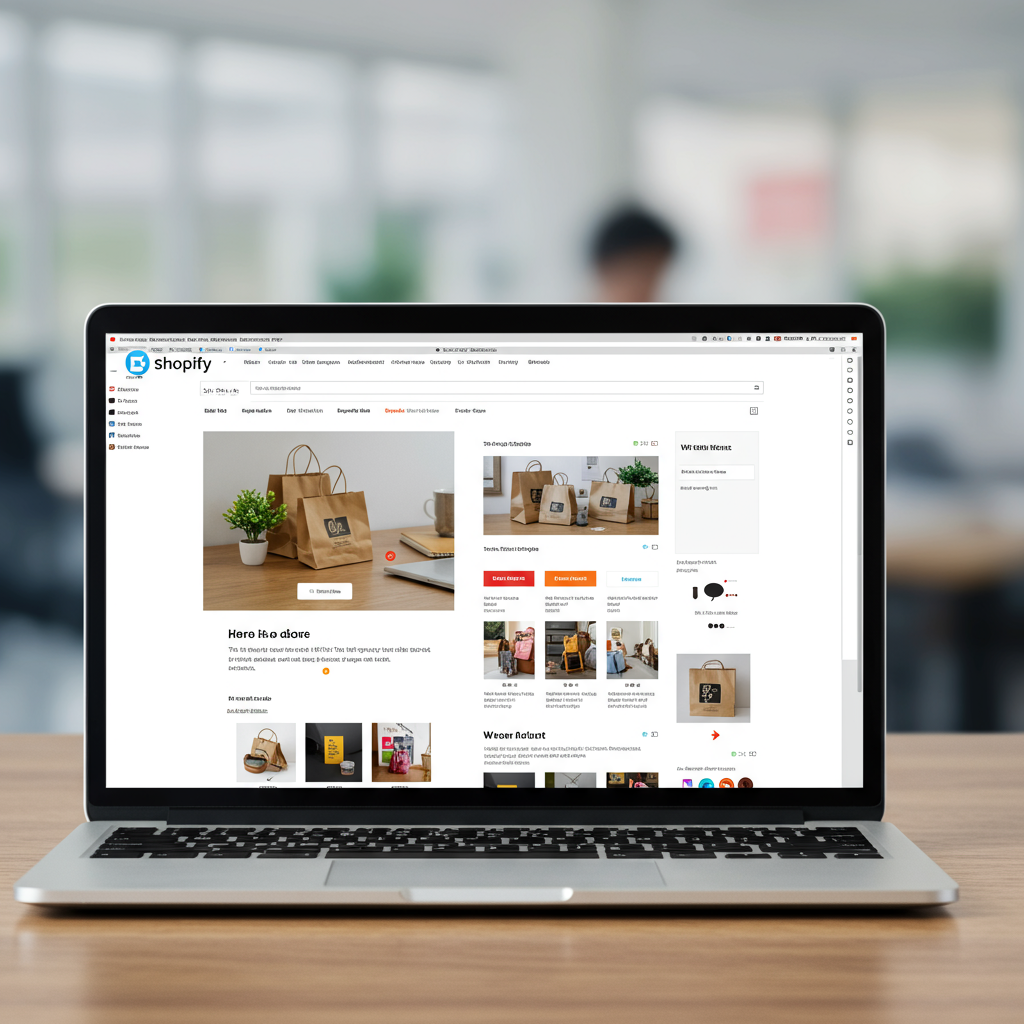Transforming Your Digital Storefront into a Conversion Powerhouse
Hello fellow Shopify merchants! As we look ahead to 2025, the digital landscape continues to evolve at an incredible pace, presenting both challenges and exciting opportunities for our online businesses.
Your Shopify store’s homepage isn’t just a digital storefront; it’s the virtual front door to your brand, often the very first impression a potential customer gets.
In today’s competitive e-commerce world, a well-designed, optimized homepage is no longer a luxury—it’s an absolute necessity for converting visitors into loyal customers.
I’ve spent a lot of time analyzing emerging trends and best practices, and I want to share my insights on how you can elevate your Shopify homepage design for 2025.
Our collective goal here is to create a homepage that not only looks fantastic and aligns with your brand identity but also performs exceptionally, driving engagement and ultimately, sales.
First and foremost, let’s talk about the hero section. This is the prime real estate above the fold, and it needs to grab attention instantly and communicate your value proposition.
For 2025, consider dynamic, high-quality video backgrounds or interactive elements that showcase your products in action, rather than static images.
Your main headline should be clear, concise, and immediately communicate your unique selling proposition (USP). What problem do you solve? What makes you different from competitors?
Accompanying this, a strong, singular call-to-action (CTA) button is crucial. Don’t overwhelm visitors with too many choices right away; guide them to the next logical step.
Next, navigation. It must be intuitive and easily accessible, whether your customer is browsing on a desktop computer or a mobile device. Think sticky headers and clearly labeled menu categories.
Mobile-first design isn’t just a buzzword anymore; it’s the absolute standard. A significant portion of your traffic will come from mobile devices, so ensure your homepage is flawlessly responsive and optimized for touch.
This means optimizing images for fast loading on mobile, using legible fonts that scale well, and ensuring touch targets (buttons, links) are large enough for easy interaction on smaller screens.
Personalization is going to be huge in 2025, driven by advancements in artificial intelligence. Can your homepage dynamically display products or content based on a visitor’s past behavior, location, or even their browsing history?
Shopify apps can help you implement this, offering tailored product recommendations, personalized banners, or even custom greetings, making each visitor’s experience feel unique and relevant.
High-quality product imagery and video are non-negotiable. Invest in professional photography and videography, and consider incorporating 3D models or augmented reality (AR) previews where applicable.
These immersive experiences can significantly reduce buyer’s remorse and increase conversion rates by giving customers a much better sense of the product before they buy.
Social proof is another incredibly powerful element. Integrate customer reviews, testimonials, or user-generated content prominently on your homepage to build trust.
Showcase trust badges, security seals, and clearly display accepted payment options to further build confidence with new visitors who might be hesitant.
Don’t forget about page speed. A slow-loading homepage is a conversion killer, leading to high bounce rates. Optimize your images, leverage browser caching, and minimize unnecessary scripts.
While Shopify’s platform is robust, your choice of theme and third-party apps can significantly impact speed, so choose wisely and regularly audit your site’s performance.
Storytelling through your homepage can create a deeper, more emotional connection with your audience. Share your brand’s mission, values, or a glimpse into your production process.
Many consumers in 2025 will prioritize brands with a clear stance on sustainability, ethical sourcing, or social responsibility. If this is part of your brand’s ethos, highlight it prominently.
Ensure your customer service information—FAQs, contact us links, return policy—is easily findable, perhaps in the footer or via a dedicated, clearly labeled section.
Consider integrating a blog section or recent articles directly on your homepage. This not only provides fresh content but also helps with SEO and positions you as an industry expert.
Finally, remember that your homepage is never truly ‘finished.’ It’s an ongoing process of optimization, adaptation, and improvement.
Regularly analyze your analytics, conduct A/B tests on different elements (like headlines or CTAs), and actively gather customer feedback to continually refine and improve its effectiveness.
The goal is to create a dynamic, engaging, and highly effective gateway to your Shopify store that adapts to evolving customer expectations and technological advancements.
By focusing on these key areas—dynamic visuals, personalization, mobile-first design, speed, and social proof—you’ll be well on your way to a high-performing homepage in 2025.
What do you think about these tips? Are there any strategies you’ve found particularly effective for your own Shopify store? I’d love to hear your thoughts!






